EARLY STRUCTURES IN VERNON,
JENNINGS COUNTY,
INDIANA
JENNINGS COUNTY,
INDIANA

Smith Storey House, 170 Brown Street, Built c. 1868
Smith Story, a druggist by trade, purchased this property across from the courthouse in 1867 and built this ornate home for himself. Smith resided here for over thirty years, from its completion until his death in 1903.
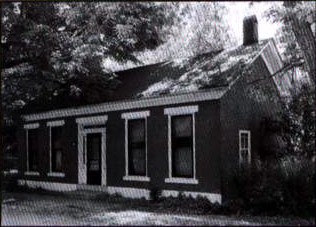
Mary Vawter House, 235 Brown Street, Built 1830
Dating to around 1840, this home has had many owners. In 1872 the home was purchased by Smith Vawter, son of John Vawter, and became the address for Mary A. Vawter for over three decades. This home is typical of the central passage type of house brought by settlers to Indiana from North Carolina, Virginia and Kentucky. The styling is Federal
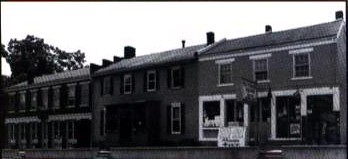
Row Houses, 119-139 Jackson Street, Built ca. 1830
These are simple examples of Federal architecture. The structures are among Vernon's oldest remaining commercial structures,
dating to the 1830's. Among the businesses that were housed here was J. L. Stott's hotel, the Sherman House
Perhaps their greatest significance is their roll with the Underground Railroad. Jennings County's location along the one of the main routes made it an early stop on the path to freedom. Alan Stott had tunnels built under the structures, and escaping slaves were brought from the Muscatatuck River behind the Sherman House to the tunnels where they hid until it was safe to move on.
Perhaps their greatest significance is their roll with the Underground Railroad. Jennings County's location along the one of the main routes made it an early stop on the path to freedom. Alan Stott had tunnels built under the structures, and escaping slaves were brought from the Muscatatuck River behind the Sherman House to the tunnels where they hid until it was safe to move on.
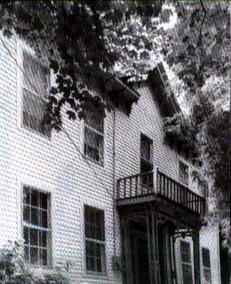
John Vawter House, 285 Brown Street, 1815-c. 1860, Style: Gothic Revival
The cabin of Vernon's founder, John Vawter, is hidden within this house. Vawter was by profession a surveyor who settled in Vernon in 1815
and platted the town that year. In 1816 Jennings County was established, with Vernon as the county seat.
The cabin's original location was across Brown St. by the railroad tracks. Vawter was a supporter of bringing the Madison and Indianpolis Railroad to Vernon. When surveyors platted the track through the center of his property, he promptly moved his house to this location. In the 1860's the cabin was covered up by extensive additions in the Italianate style. The Nauer and Poole families also lived in this home. Recently it has many more additions including a pool.
The cabin's original location was across Brown St. by the railroad tracks. Vawter was a supporter of bringing the Madison and Indianpolis Railroad to Vernon. When surveyors platted the track through the center of his property, he promptly moved his house to this location. In the 1860's the cabin was covered up by extensive additions in the Italianate style. The Nauer and Poole families also lived in this home. Recently it has many more additions including a pool.
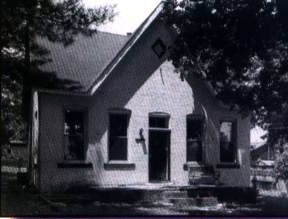
African-American School, 35 Perry Street, Built 1898
This building was built in 1898 as a school for African American children in Vernon. It was desegregated in the early 20th century, and in 1920 the building was converted to a residence. The building remains a residence to the present day.

Vernon Baptist Church, 155 Washington Street, Built 1871
Vernon's Baptist Church was organized on April 27, 1816 by town founder John Vawter. During the congregations's first years, meeting were held in members' cabins and an open air site. The first church on the present site was built in 1824. The Baptists outgrew this building, and in 1871 the present building was erected.
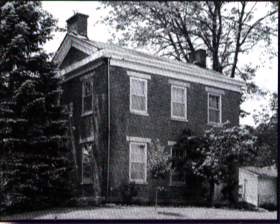
James Burt House, 135 Washington Street, Built c. 1840
Work on this home began in 1834 and was completed by James Burt in 1842. Burt a local doctor educated in Philadelphia, lived here until his death in 1875. He was active in local religious and educational matters. He served as a trustee of the State Indsitiution for the Deaf and Dumb at Indianapolis as well as of the Vernon Academy, an early school. The house is said to have been built near the ancestral burial ground of the Native Americans who once lived in the area.
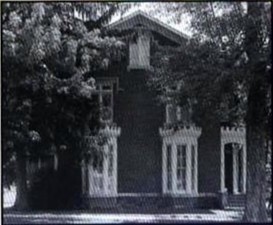
This house dating to the 1830s, was the residence of Achilles Vawter. It later became the Vernon Normal School, providing training for grade school teachers. In July 1863 Confederate General John Morgan led a raid through southern Indiana and threatened Vernon. The Vernon Normal School served as Union General Lew Wallace's headquarters during the town's defense.
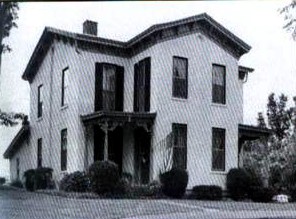
W. B. Hagins House, 65 South Street, Built 1855
Local attorney W. B. Hagins built this handsome home, located near the Muscatatuck River on the southern end of Vernon, around 1855. Hagins was born in Kentucky in 1815. He graduated from Indiana University in 1845 and worked as an attorney and fire insurance agent. He also served as Notary Public and Justice of the Peace in Vernon.
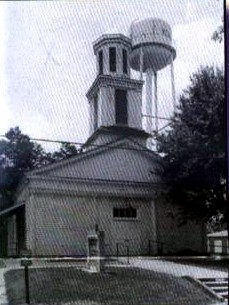
Vernon Presbyterian Church, Washington Street, Built 1839
The Vernon Presbyterian Church was founded on May 11th, 1825 by the Rev. John Finley Crowe. This Greek Revival church was completed in 1839. The building has had slight modifications since its construction. Originally the front entry had two separate doors. In 1815 they were reconfigured to the present central door. Additional mondifications included the addition of a Sunday school to the rear and the removal of pillars from within the sanctuary.
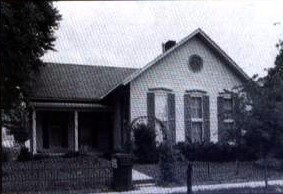
Elizabeth Wiggam House, 22 Brown Street, Built c. 1860
Dating to aroung 1860, this house was the residence of Elizabeth Wiggam for several years. Noted "Hoosier group" impressionist painter T.C. Steele is said to
have stayed at the house during a visit to Vernon. Steele was interested in Indiana's landscape and painted several scenes of Vernon and its rural surroundings. Mrs. Wiggam was quite
an interesting person. Here is a link to her obituary on this site. Obituary

Vernon Seminary, Montgomery Street, Built: 1838
Opened around 1830, the Vernon Seminary was the town's first high school. High schools were often referred to as seminaries at the time. The Federal style building originally had a single room on each floor with and exterior stairway. Additions have resulted in it looking the way it does now. It was updated in 1860. In 1917 a Tornado struck Vernon and caused considerable damage to the north end of the building. The effect to the second story and the roofline of this area can still be seen. It was at this building that the Clionian Society, the first women's club with a constitution, organized on July 17th 1858. The Clionian Society was active in Vernon's educational matters and laid the cornerstone for Vernon's second high school. The Vernon Seminary was later converted to residential use.
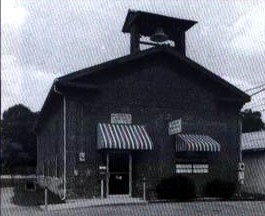
Town Hall, 29 Montgomery Street, Built 1838
This modest structure was once the home of the first Desciples of Christ Church organized in Indiana. The Church was organized in 1831, and this building was erected in 1838. The congregation flourished until the 1870's, when due to deaths of members and others moving away, the membership declined. In 1876 the church merged with the Christian Church in North Vernon. The building later became a warehouse, garage, and is now the town hall.
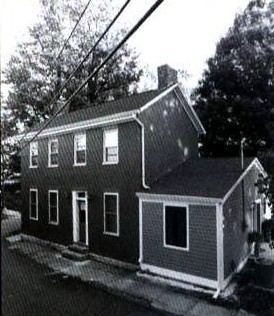
John B. New House, 119 Pike Street, Built: c. 1820
John B. New moved to Indiana from Kentucky in 1815. He was a noted pioneer preacher and for several years he preached with the Baptists. In 1830 he joined with a group of reformers and organized Vernon's Desciples of Christ (Christian) Church in this house the following year. He followed up that success with the establishment of Christian Churches throughout the state. Additions were made c. 1840 and c. 1890. The exterior remains the same while the entire interior has been updated in the last few years.
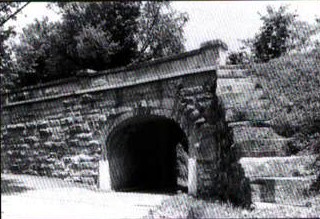
M & I R.R. Overpass, Pike and Gaines Streets, built 1837
This imposing stone arch was erected in 1837 as part of the Madison and Indianapolis Railroad through Vernon. The M & I was the first railraod in Indiana, and this segment was the first elevated rairoad constructed west of the Alleghenies. The railroad was elevated in Jennings County so that it would be above the flood waters of the Muscatatuck and to eliminate a steep grade.
The town founder, John Vawter, campaigned hard for the railroad and faced heavy opposition from other residents. When built, the line was laid directly through Vawter's property, requiring him to move his house. The home of John B. New was also affected, its view and value being diminished by the construction of the elevated railroad near its doorstep. The line from Madison to Vernon was completed in 1841 and in 1847 the line was completed to Indianapolis.
The town founder, John Vawter, campaigned hard for the railroad and faced heavy opposition from other residents. When built, the line was laid directly through Vawter's property, requiring him to move his house. The home of John B. New was also affected, its view and value being diminished by the construction of the elevated railroad near its doorstep. The line from Madison to Vernon was completed in 1841 and in 1847 the line was completed to Indianapolis.
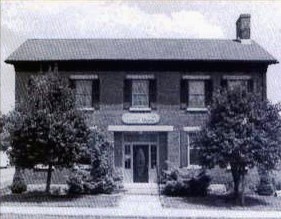
William Bullock House, 70 Brown Street, Built: c. 1844
This house was built around 1844 for William Avery Bullock. After studying law at Williams College in Massachusetts, Bullock became active in Vernon's politics. He served as Jennings County Postmaster from 1829 to 1841. He also served as Justice of the Peace and Mayor. In 1828 he was one of the organizers of the Jennings Academy. He served three terms in the Indiana General Assembly during the 1820s. Following Bullock's death in 1867, the home became the residence of Basnett family. It was also a restaurant, in 2015 is back to being a private home.
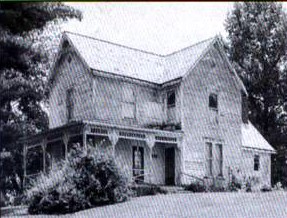
Martha King House, 230 Pike Street, Built: c. 1906
Located on a large parcel of land near Vernon Cemetery, this home is a late addition to Vernon's housing stock. It replaced an earlier home by 1900. The home was the residence of Martha King. It was also at one time the parsonage of the Vernon Presbyterian Church.
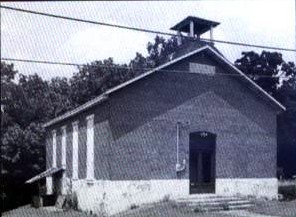
Vernon Methodist Church, 55 Poplar Street, Built: 1865
The Vernon Methodist Church was organized in 1817 at the home of William Prather. The congregation built this building in 1865. The church is a simple structure.
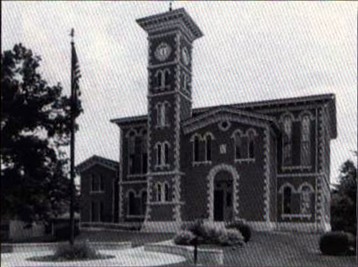
Jennings County Courthouse, Courthouse Square, Built: 1860
In 1816 Vernon was established as the county seat for Jennings County. John Vawter provided a sate at the center of the town for a Courthouse. The first courthouse would be suffiecient until the mid 1850s, when the need for space required new construction. Work began on the present courthouse in 1858 and it was completed in 1860. The building was formally dedicated on July 4th 1861 with a great celebration. The new courthouse was designed by Isaac Hodgson, who designed a similar courthouse for Morgan County. The clock at the top of the 75-foot tower was not added until recently, considered too expensive when the building was built.

Jennings County Historical Society, 134 Brown Street, Built: 1838
The home of the Jennings County Historical Society dates to 1838. Thomas J. Storey opened his stage coach stop and inn in this building that year. In the 1840s the building became a hotel known as the North American House. It has seeen a number of additional uses over the years, including a drug store, wallpaper store, residence and now the Jenning County Historical Museum.
The information on this page was taken from a pamphlet handed out for a walking tour of Vernon. The entire tour was just one mile long. The town of Vernon was listed as a District on the National Register of Historic Places in 1976
You may use this material for your own personal research, however it may not be used for commercial publications without express written consent of the contributor, INGenWeb, and